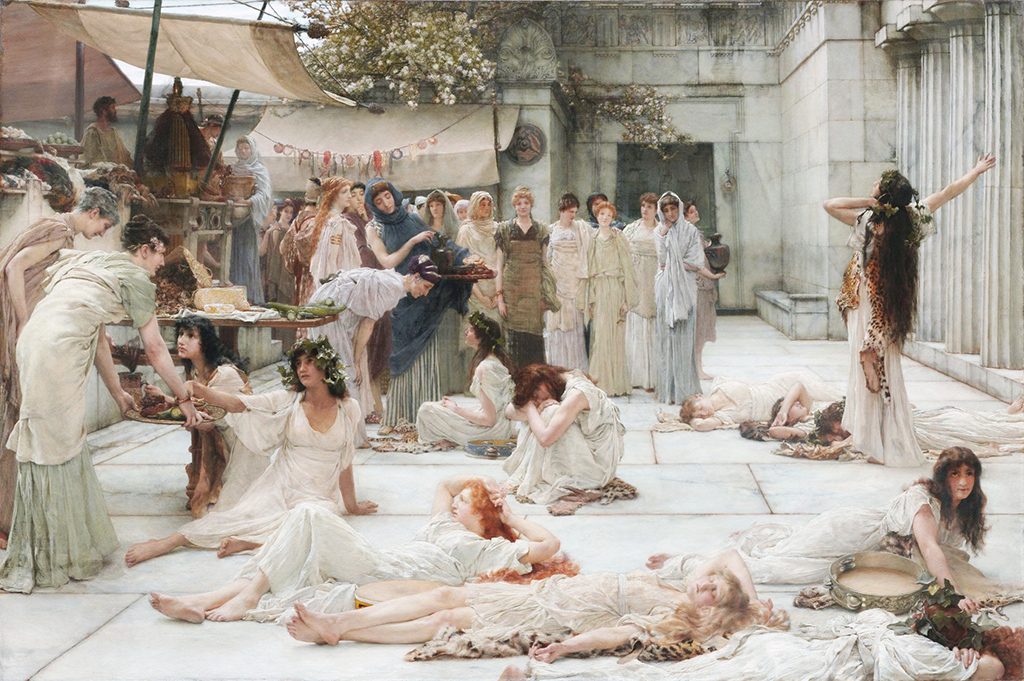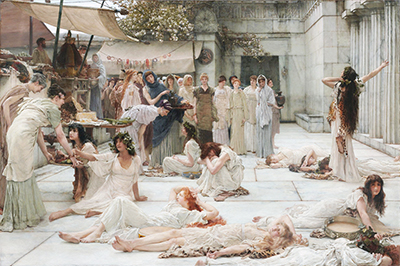The Women of Amphissa is an oil on canvas painting by Dutch-born painter Sir Lawrence Alma-Tadema in 1887.
He spent most of his life in England during the Victorian Era and primarily depicted Classical antiquity and the luxurious lives of the people of the Roman Empire in his paintings. This includes The Women of Amphissa. It was inspired by an historical event recorded by Plutarch, a Greek historian, biographer and essayist. This painting shows the morning after a celebration of Bacchus/Dionysus, the God of wine and ritual madness.
This celebration caused a group of women to wander into the city of Amphissa from Phocis. Despite these two cities being at war, the women of Amphissa allowed the women from Phocis to fall asleep in their marketplace and stood guard throughout the night to ensure the men of the city caused them no harm. As seen in this painting, the women of Amphissa also provided them with food and care the next morning.
While The Women of Amphissa is both ethereal and dream-like, it is also very realistic as the details created by Alma-Tadema make the painting come to life. From the hair and clothing of the women, to the flowers and sculptures in the wall, the details create the beauty of this painting. Alma-Tadema also uses a lot of white and varying shades likely representative of the peace between these groups. It is reported that Alma-Tadema used his second wife, Laura, as a model for this painting.
Many interpret this painting as a lesson in charity and humanity for the Victorian people of Alma-Tadema's time as this was an era with lots of poverty, child labour and morality standards. It has also come to represent the strength of femininity and the importance of protection because the women of the city would have stood up to soldiers if necessary.
After his death in 1912, Alma-Tadema's work was held in low esteem by the public despite his success during his life. In the 1960s, however, his body of work was re-examined and deemed very significant for art history and in particular English art of the nineteenth century. Today, The Women of Amphissa is part of the private collection of the Sterling and Francine Clark Art Institute.





